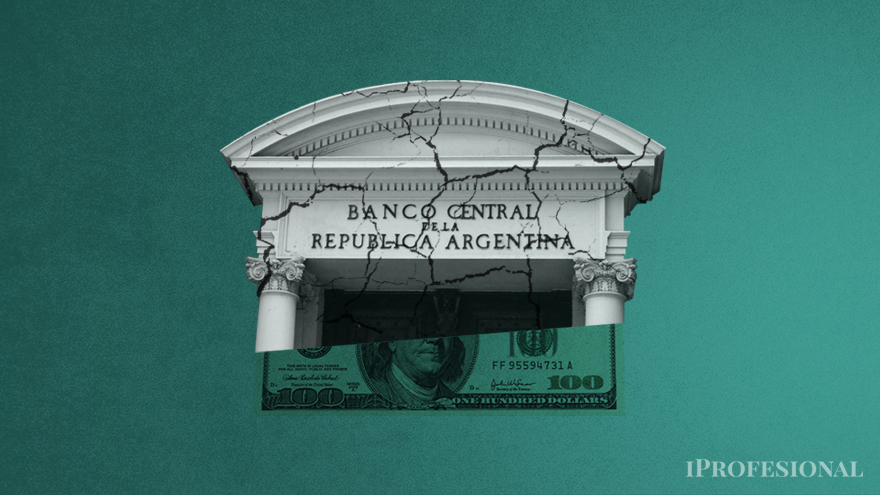He Plan Arrive Is he going through his worst moment? Or has it already failed and we don’t dare to say it? To answer that question, you must first review what the so-called “Get Plan” was.
Plan Llarr was the way of referring during July-August 2022 to the attempt by the Administration of Alberto Fernández and the Front of Allin a broad sense -and Sergio Massain a narrower sense of who took over the management of the economic area- for prevent an abrupt and discrete correction of the exchange rate official nominal value (TCNO) in the context of the disarmament of the part of the indexed sovereign debt market (the non-captive part) and negative net reserves (NIR).
Why was it necessary to avoid the abrupt jump of the TCNO? Because it is “piantavotos”, several respond almost tautologically and not paying attention to the “why”.
The non-tautological answer is to avoid an even greater acceleration of the inflationary process, with the consequent destruction of real income, contain the risk of spiraling, given the total lack of credibility and the absence of anchors, and avoid a sharp drop in economic activity. at the end of 2022 and a further deterioration of social indicators. Maintaining this extremely poor panorama and its consequent electoral correlate throughout 2023.
Tools with diminishing results
The tools used in pursuit of this objective were, on the financial side, BCRA intervention in the secondary debt market and the placement of debt against bank liquidity. Monetarily expansive financing sources that, inexplicably, fell outside the radar of the monetary goal of the agreement with the IMF.
For him exchange sidethe idea of unfoldings ad hoc or informal exchange rates of a transitory nature and the promise of REPRO operations. In other words, advance the liquidation of foreign currency and debt in dollars to improve the position of net reserves of the BCRA.
Sergio Massa resorted to exchange rate incentives for soybean producers as an essential part of the Plan Llegar. But it is a resource that shows signs of depletion
In it plano fiscal the ad hoc developments helped accommodate the fiscal goal, accounting as income part of the largest issuance by the differential TCN, and the plan of rate segmentation, which was already known to be insufficient for the fulfillment of the fiscal goals and laborious implementation. The latter led to new delays and complications.
The cost of the unfolding was not only related to the greater inflationary pressures in the short term and the temporary inconsistency in which it was incurred. In addition, the BCRA’s balance sheet suffered even more on the side of remunerated liabilities.
All this in the context of an agreement or Extended Facilities program with the IMF that there was already reduced to a bridging loan to settle the payments of the 2018 Stand By program and avoid entering into arrears with the agency, since it no longer had expectations and Argentina was failing to comply and “drawing” goals no effect on IMF disbursements and approvals.
In other words, largely as a result of the strong expansion of pesos in multiple ways and the advancement of tax revenues and foreign exchange liquidation for exports, the Plan Llegar de Massa consisted of mortgaging the start of 2023 to be able to close 2022, hoping that, later, a good harvest and the completion of the REPOs will help to accommodate the variables.
In this design it was already clear that the formulation of the goal of 3% or 4% monthly inflation for April was nonsense in the medium term from the political and economic point of view (management expectations). As temporarily inconsistent as the rest. Well, like the rest, I was focused on the short term. Help close out 2022.

The Central Bank’s net reserve position shows a marked deterioration, and the old tools are no longer working, warns Caamaño
The harsh reality of the harvest
At that time, when those decisions were made, it was known that the harvest was not going to be good since the drought had already affected the fine harvest and determined that the sowing of the thick harvest began to be postponed. It’s more. That implied that wheat was not going to help with an “exchange bridge” until the thick crop during the first quarter.
So it was. The first quarter was so bad that at the end of March net reserves had returned to being negative. In fact, despite the “soybean dollar 1”, the NIR would have closed negative in 2022 if the “soybean dollar 2” had not been launched at the end of said period. Which deepened the first quarter mortgage.
And when the second quarter arrived, when the thick harvest had to save the clothes, the known happened. The harvest was worse than anticipated until mid-February (35 million tons), since it has not started to rain since then, as several models had anticipated. AND the REPOs never materialized.
Consequently, six or seven months later, Massa entered the second quarter of 2023, the one prior to the start of the electoral calendar, with negative net reservesa monthly inflation rate with a floor of 7% per month, a crawling peg of the TCNO that, far from loosening, should have acceleratedan economy in recession and deteriorating social indicators.
To add insult to injury, the tools used before now look exhausted. The ad hoc unfoldings require greater incentives on the side of the differential TCN that is paid and the breadth of the sectors involved, which increases its impact on inflation. He overheating of devaluation expectations it makes futures more expensive and with it the financial costs of import operations. This and the tightening of the “traps” imply additional inflationary pressures and less activity.
That is to say, to avoid the discrete jump, the option of more ad hoc developments and more stocks is more inflation and less activity, in an economy that is already doing very badly on that side.

The current debate in the market is whether financial assistance from the IMF will be enough to stabilize the economy in the short term: some economists are skeptical
Is the advance of dollars from the IMF useful?
So, did the Arrive Plan arrive? In a narrow sense, some can say that for now, yes, because there was no discreet jump. In a broad sense, The truth is, no. You could even say that the spiralization risks, far from being reduced, they increased in these six or seven months.
Only from the symbolic. In practice, Massa’s “Arrival Plan” is broken or, being optimistic, aground. His only lifeline today is to get fresh dollars to finance the imbalance, intervene in parallel (yes, borrow to keep the exchange rate gap below 100%) and buy time.
There isn’t much left. For this reason, there are those who are no longer too ashamed to affirm that Massa’s economic plan has been reduced to “begging for dollars”. Or even anything that looks like it.
Bonus track. Is advance disbursements with the IMF equivalent to getting fresh dollars? No. All that the IMF advances from the expected disbursements between now and the end of the year are funds that have to be used to pay the IMF between now and the end of the year. With which, the advancement of funds in the current context makes it possible to cover the short-term hole, but awakens the ghost of entering into arrears with the IMF in a couple of months.
Closing. The Arrive Plan ended due to its own procrastinating logic. It’s been a while since We are now back in a Hold Plan. With all that that implies.
Gabriel Caamaño is an economist and director of Consultora Ledesma

